As the end of the year approaches, we always find ourselves tallying our reading lists for the year. How many books did we read? Which was the most compelling? The most inspiring? The best guilty pleasure vacation read? And… did our to-read stacks actually shrink, or did we buy more books than we read?
As always, so many of the titles on our favorites list are about nature. Field guides, essays from naturalists, climate fiction, and ecology and conservation science books on any number of topics.
Whether you’re looking for a good book to curl up with over the holidays, or a gift for the nature-lover on your shopping list, here are six of our recent favorites. We hope you find something here you enjoy.
Top 10 List
-
The Animal Adventurer’s Guide
By Susie Spikol
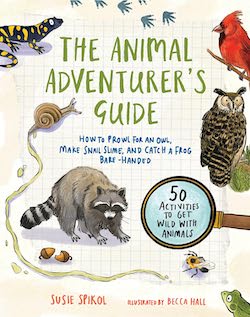
Do you want to catch a frog? Hear owls hooting? Learn how to catch insects without harming them? Kids love wildlife encounters, but for many, getting up close to wildlife can seem a daunting task. This delightful book by naturalist and educator Susie Spikol is a guidebook to a lifetime’s worth of local wildlife adventures, perfect for kids and families. Spikol describes how to build skills that will get you up close to wildlife in your backyard or local park.
With fun illustrations by Becca Hall, the book includes many favorite wildlife-related activities: tracking, dissecting owl scat, netting insects. You’ll also learn how to turn your own hand into a bird feeder, where to search for basking snakes and how to construct shelters used by various wild animals. There are citizen science and conservation projects, and Spikol always emphasizes ethical and responsible wildlife interactions. It’s a fun book for any aspiring wildlife enthusiast, and even experienced naturalists will pick up some new skills. (MM)
-
Knowing the Trees
By Ken Keffer
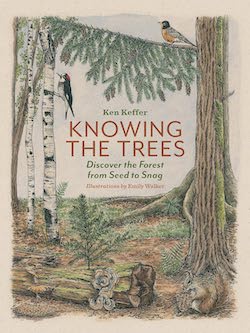
This is a book that sees the forest and the trees. Organized concise entries, Knowing the Trees provides a look at trees “from seed to snag.” Naturalist and outdoor writer Ken Keffer covers a lot of ground (or maybe, canopy) here, with entries devoted to explaining all the key aspects of tree natural history, forest ecology and forest conservation.
He explores ecological interactions with trees, from birds that eat cones to fungal relationships. There are entries on charismatic tree species, like redwoods, and even famous trees, like the long-lived Pando Grove. Keffer also delves into the human relationship to trees, from maple tapping to wood used to make musical instruments.
With illustrations by Emily Walker, it’s one of those books that is filled with fun facts that you’ll remember during your next hike or stroll. With the short entries, it’s perfect for picking up an browsing at random, but I read the whole thing in a couple of sittings. (MM)
-
Crossings: How Road Ecology Is Shaping the Future of Our Planet
By Ben Goldfarb
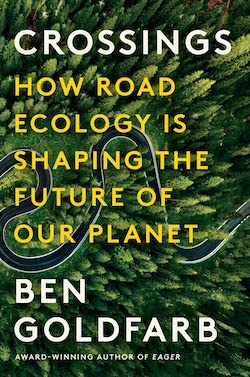
Roads are a routine part of everyday life, but to wild animals they are foreign, frighting, and too often fatal. In his new book, Crossings, science journalist Ben Goldfarb takes a comprehensive look at the ecological consequences of the 40 million miles of roads that snake across our planet.
The damage wrought by roads extends far beyond that deer or opossum carcass at the edge of the pavement. Road salt alters aquatic ecosystems. Traffic noise disrupts songbirds for miles around. Invasive species hitchhike on our undercarriages or in our tires.
Goldfarb unravels the field of road ecology by joining researchers as they collar migratory mule deer in the mountain west, and visiting wildlife carers as they nurse orphaned wallabies in Tasmania. And he looks to the future, speaking scientists who are working to make roads more compatible with the wild world, once wildlife crossing or overpass at a time.
Crossings makes for compelling reading. It’s deeply researched and beautifully written, and I found it hard to put down. You’ll never look at a road the same way again. (JEH)
-
Playing with Wildfire
By Laura Pritchett
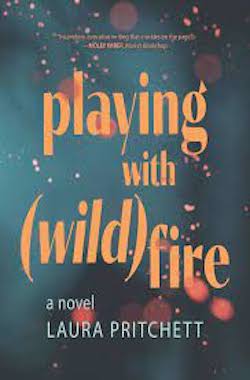
As a conservation writer living in the western United States, I am sent a lot of research papers, policy reports and journalism about fire. As climate change and forest management issues result in bigger and more frequent fires, this is all important work. But the dry language of reports fail to convey the devastation and emotional toll of massive fires.
Laura Pritchett takes on this task using fiction to tell the story of a community in an evacuation zone, facing the largest fire in Colorado’s history. Through a series of interconnected stories, Pritchett gives a glimpse of the hopes, rages, quirks and tragedies of community members who must face the reality of the world burning around them.
Pritchett explores themes of isolation and grief brought on by a fire that occurs during a global pandemic. But it’s also about connection. Old grudges and polarized politics become abstractions in the face of smoke and flame. Pritchett plays with fictional forms here: There’s one story written as a federal grant application. An unfortunate accident involving a deer becomes a conduit for bring community together. There’s astrology and crisis hot lines and stories from the perspective of bears, trees and the mountain. Through the often heartrending stories, the novel remains hopeful, that humans can learn from such calamity and perhaps shape a better future. (MM)
-
Tracking Giants
By Amanda Lewis
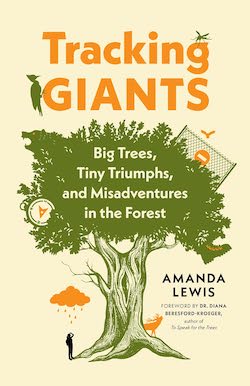
This is the type of nature quest I deeply love and endorse. Amanda Lewis, a burned-out book editor, decides to visit the biggest trees in British Columbia. This Canadian province tracks the largest trees of each species – dubbing them “Champions” – and visiting, documenting and updating these trees has given rise to its own subculture.
Some of the Champion trees are found in British Columbia’s well-known, old-growth forests, requiring lengthy wilderness hikes. Others are found in city parks and vacant lots. While finding trees might seem easier than finding, say, birds – trees obviously can’t take evasive maneuvers – Lewis finds plenty of challenges. Trees are cut, or burn, or just rot and die. It’s not like visiting a museum.
Lewis begins the journey as a curious but unskilled naturalist. As she progresses, her appreciation for trees and their complex relationship with humanity deepens. She explores Indigenous relationships to trees, the recent history of colonization and deforestation and the natural history of these stunning individual trees. She also shares some great reflections on embarking on such a quest. So easily, it can become just about ticking boxes. But Lewis, in the face of towering trees, comes to focus not just on finding Champions but on enjoying the overall experience. (MM)
Top 10 List
-
Chasing Giants
By Zeb Hogan and Stefan Lovgren
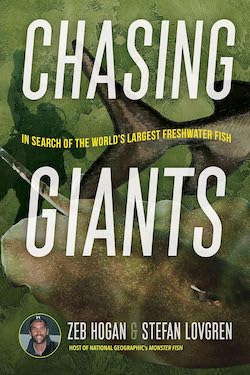
Here’s another giant quest: to document the largest freshwater fish on earth. When we think of large fish, and even fish diversity, our minds often go straight to oceans. But freshwater rivers and lakes contain nearly half of all fish species, despite living in only 3 percent of the Earth’s water. And some of those fish are big. Really big.
Hogan, a fisheries research biologist, journeys around the globe in search of freshwater giants. For an angler, fish nerd or traveler, this book is filled with great adventures with incredibly cool species like alligator gar, wels catfish, giant freshwater stingray and many more. It’s not often a cheery account: these “megafishes” in many parts of the globe face a litany of threats including hydropower development, pollution and overfishing.
Hogan’s aim is to bring attention to these freshwater megafauna by documenting them. He’s an obsessed adventurer doing what it takes to get close to these animals, whether by rod-and-reel angling, joining local fishers or swimming with the fish. And every chapter highlights a conservation message, detailing how we can save the freshwater diversity that remains. (MM)
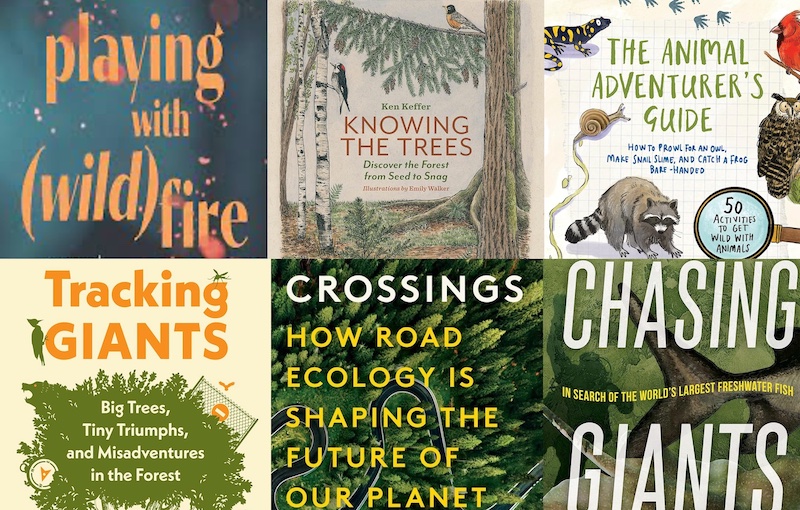



Join the Discussion